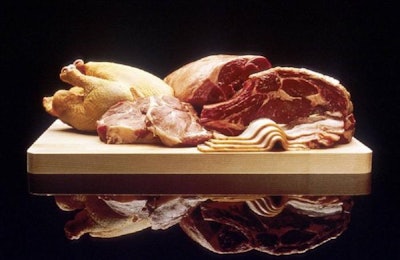
Overall pet food market growth is slowing in the mass market channel, but one area expected to see continued growth within the specialty products market is pet food and treats with novel meat proteins, said David Sprinkle, research director, Packaged Facts. Sprinkle presented his opening keynote on “Meat and novel protein trends in pet food” before Petfood Innovation Workshop 2016.
Sprinkle shared data on the channel shopping trends of pet owners supporting the increasing consumer demand for specialty pet products containing novel protein ingredients. From 2010 to 2015, the percentage of pet-owning households that shopped at supermarkets fell from 47.4% to 44.7%, while at discount stores, that number dropped from 30.8% to 23.8% over the same time. Compare that to the number of pet-owning households who shopped at pet superstores, which rose from 46.3% in 2010 to 48.1% in 2015, and on the internet (7% in 2010 to 9.3% in 2015), indicating this growth in the pet specialty market as consumers increasingly shop where these novel protein items are sold.
Sprinkle also cited Packaged Facts’ statistic that products with high protein content topped the list of consumers’ pet food purchasing patterns by nutritional content in 2015 for 28% of dog owners and 21% of cat owners.
In terms of which of these protein types are considered “novel,” however, he said that can be somewhat subjective. Data from Gfk on pet channel sales for pet food meals by the type of exotic or novel protein notes that salmon grew by $57.2 million in 2015, followed by duck ($27.5 million), rabbit ($11.5 million) and bison ($9.7 million). Sprinkle said that although he considers salmon to be a traditional protein, its impressive growth shows that “salmon could be sort of a good bridge to exotic fish and seafood in the same way that lamb and red meat can be a good bridge to exotic red meats.”
Sprinkle cautioned, “Even if you have a novel or exotic protein, that is just one of the early questions about what you are doing with your product, because there are other questions that need to be answered.”
For example, in a survey of pet food attributes desired by dog and cat food purchasers, “Made in the USA” topped the list, while the “ancestral/paleo/wilderness” claim on its own ranked near the bottom. So, it is not just enough for pet food and treats to include a novel protein source; instead, companies need to consider how their novel protein specialty product will be positioned in the broader marketplace, Sprinkle said.

David Sprinkle presented the opening keynote to Petfood Innovation Workshop 2016.
Petfood Innovation Workshop was held Monday, April 18 prior to Petfood Forum 2016. Petfood Forum 2016 takes place April 18-20 at the Kansas City Convention Center in Kansas City, Missouri, USA.

















